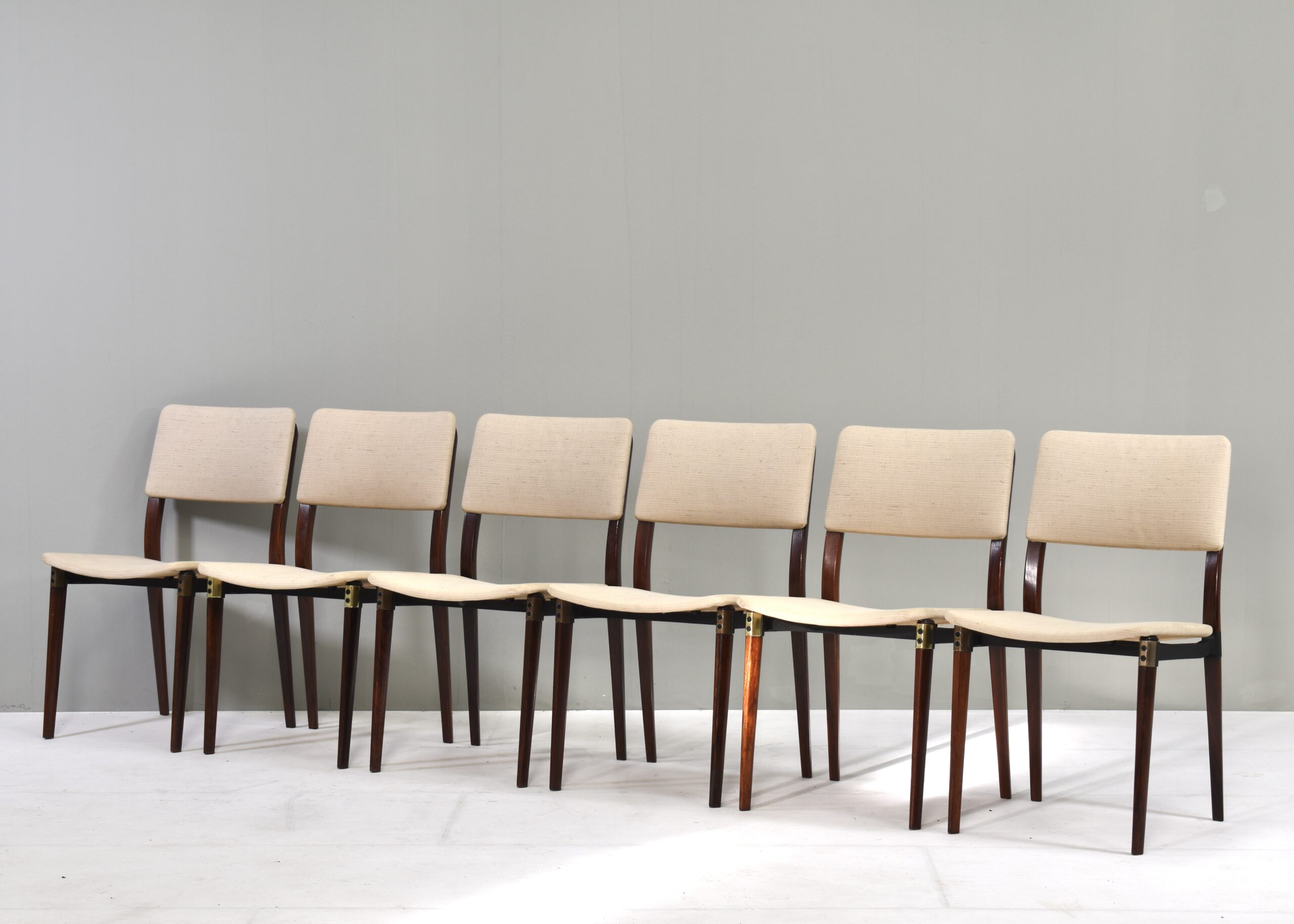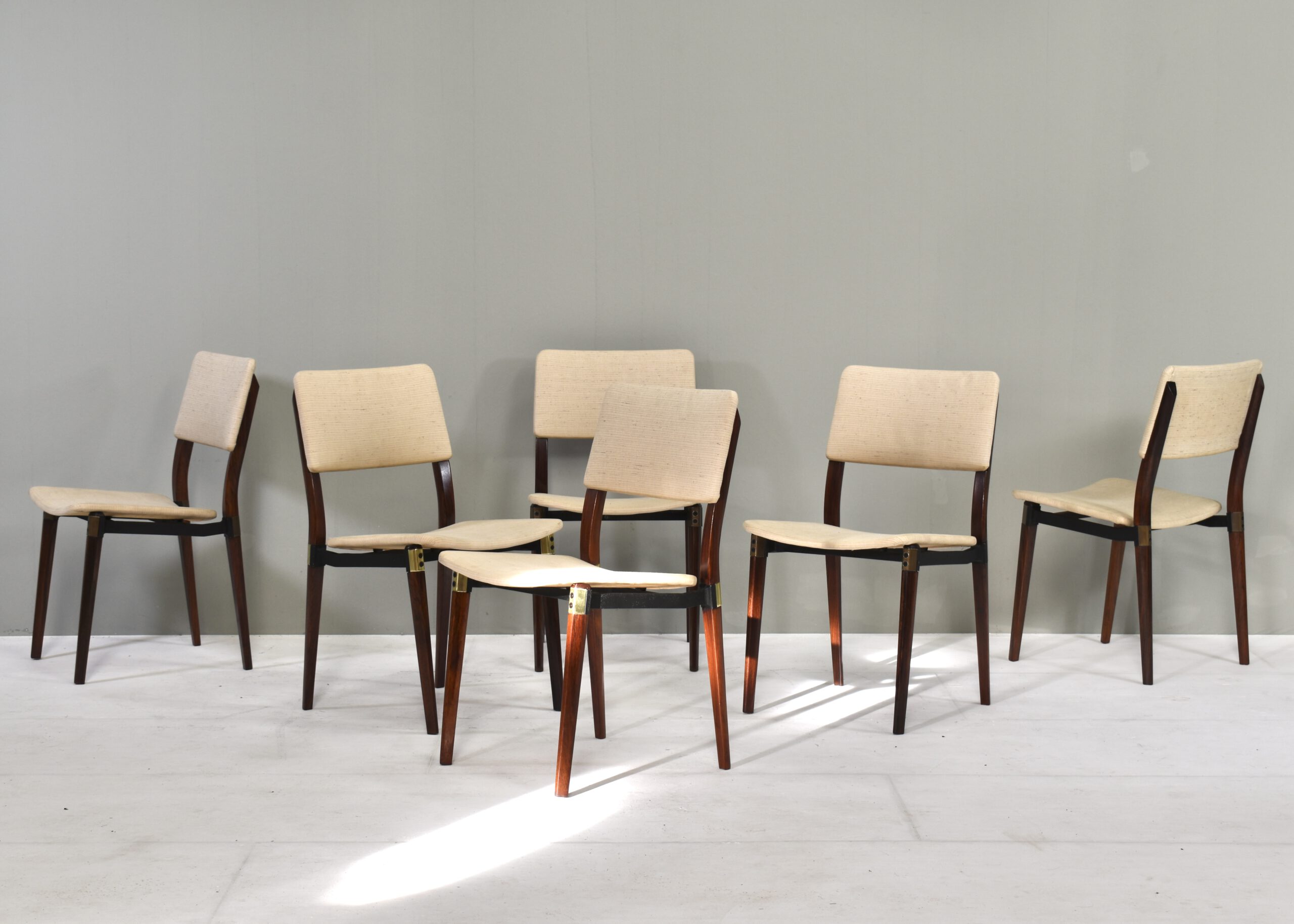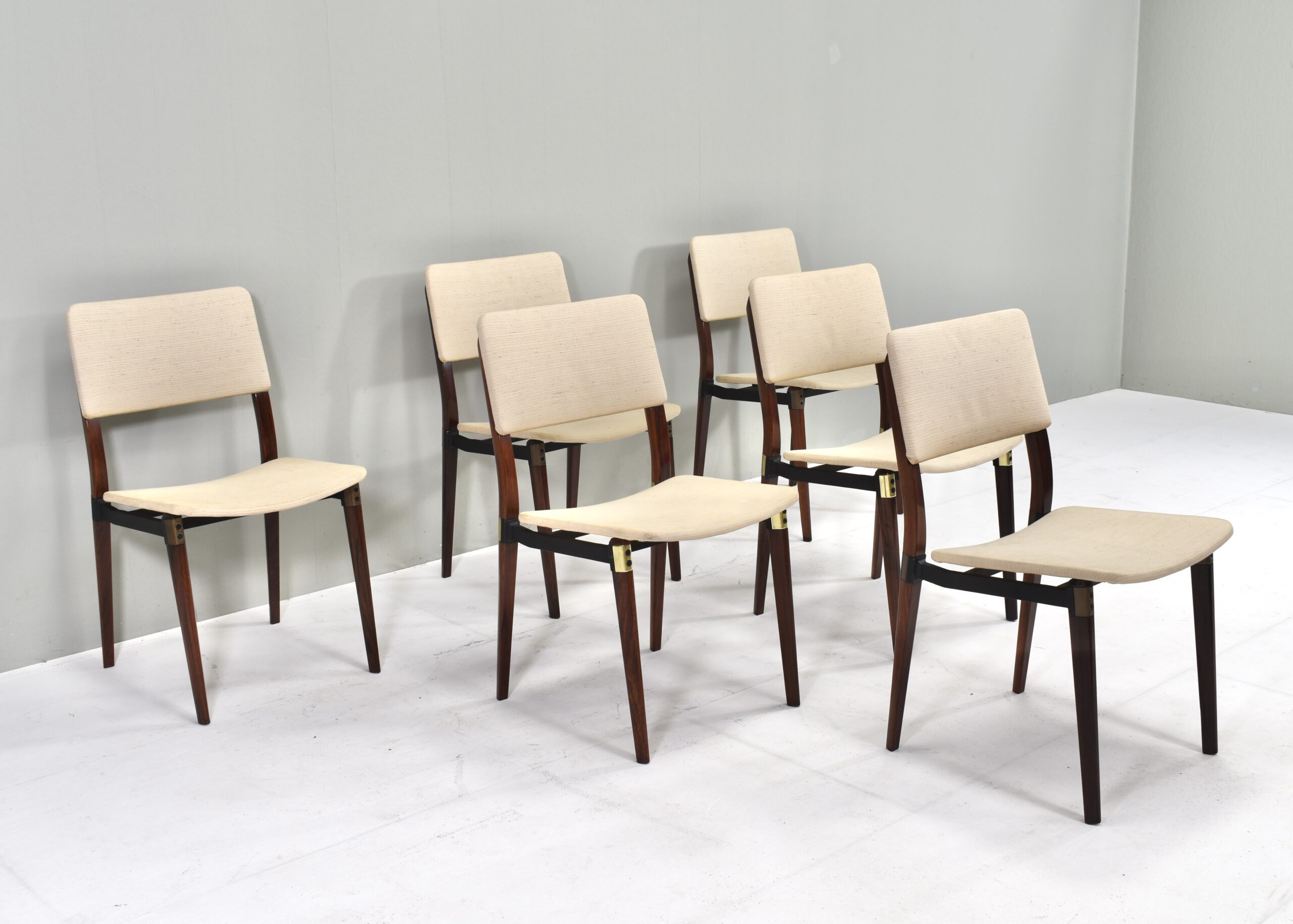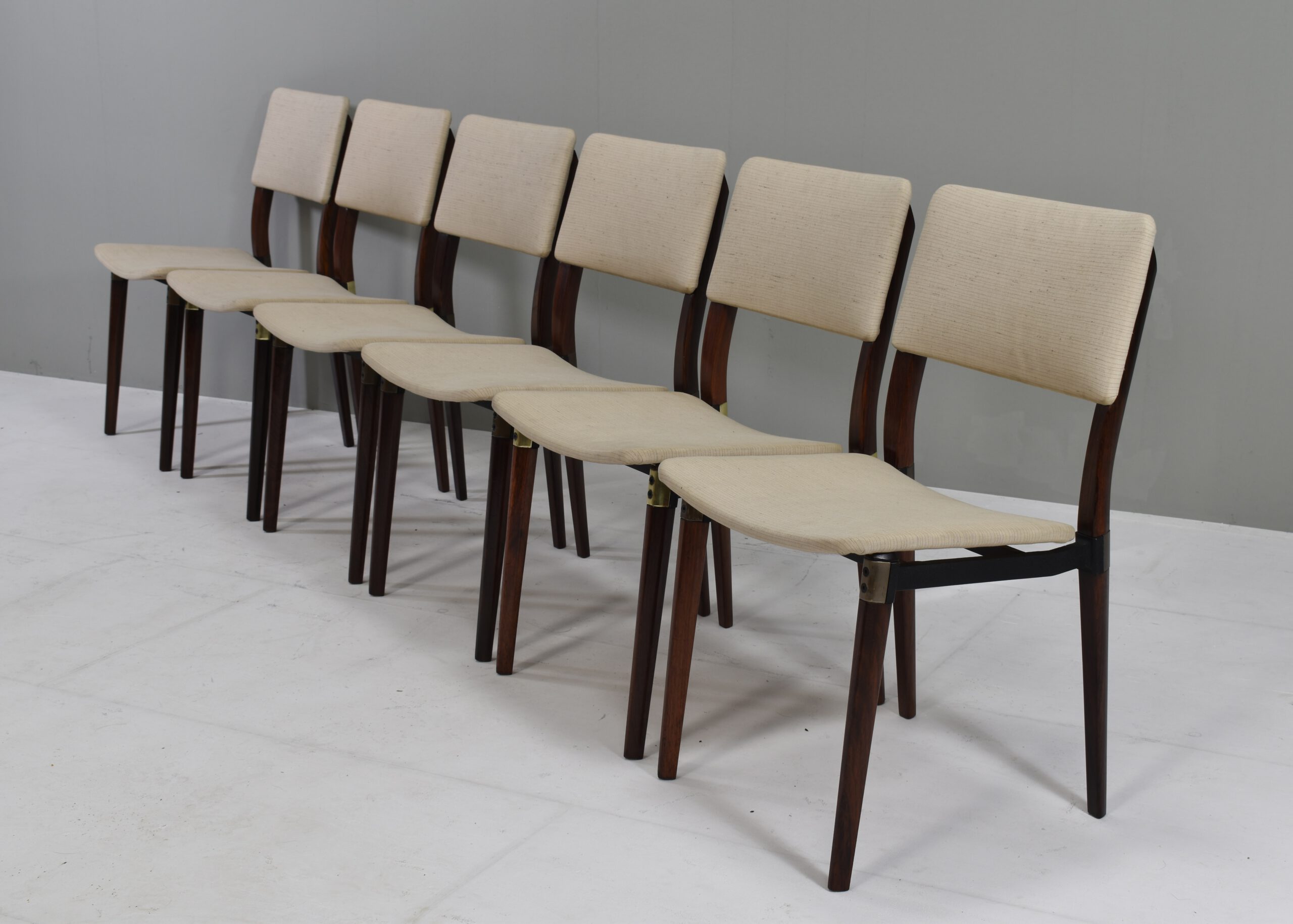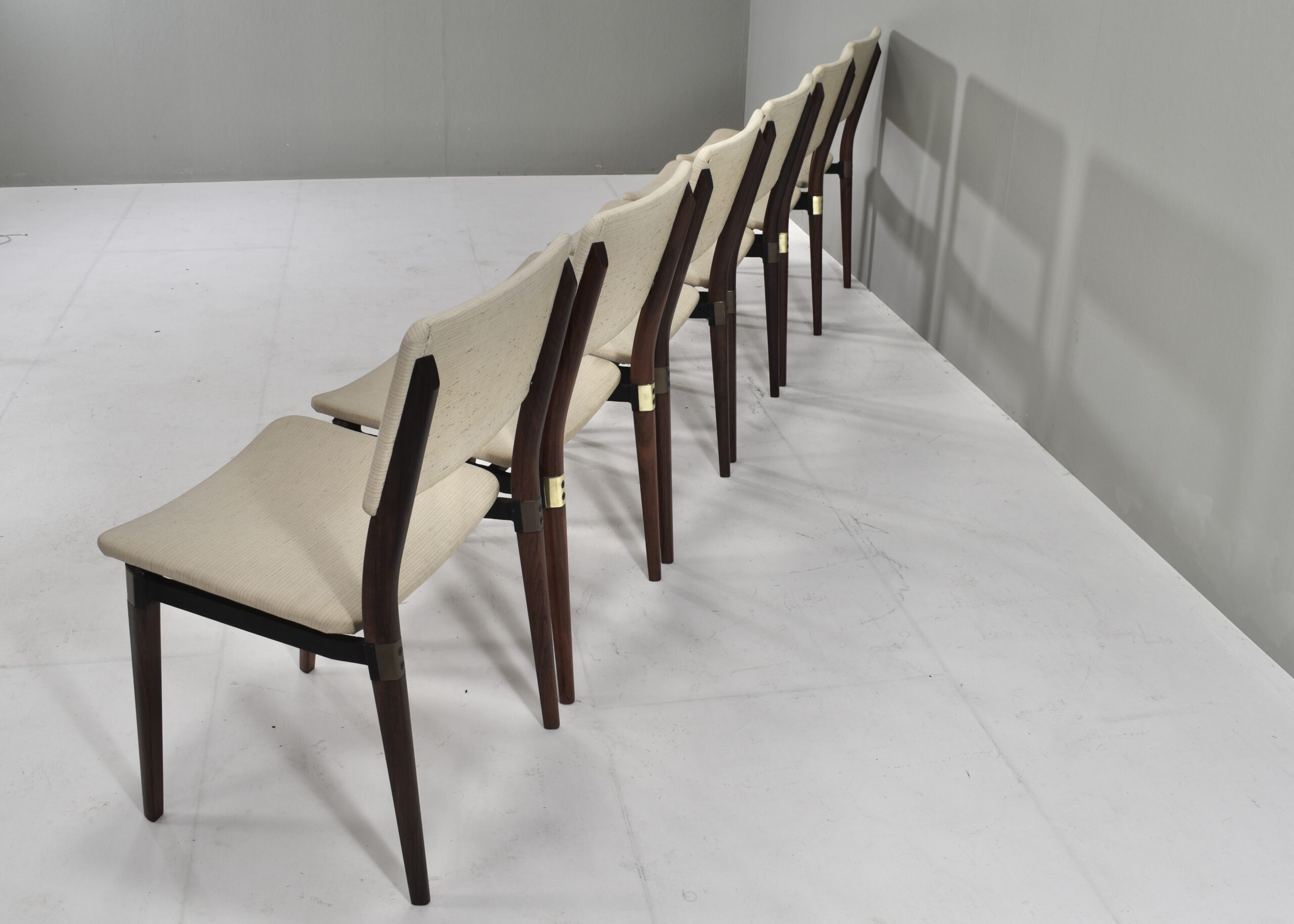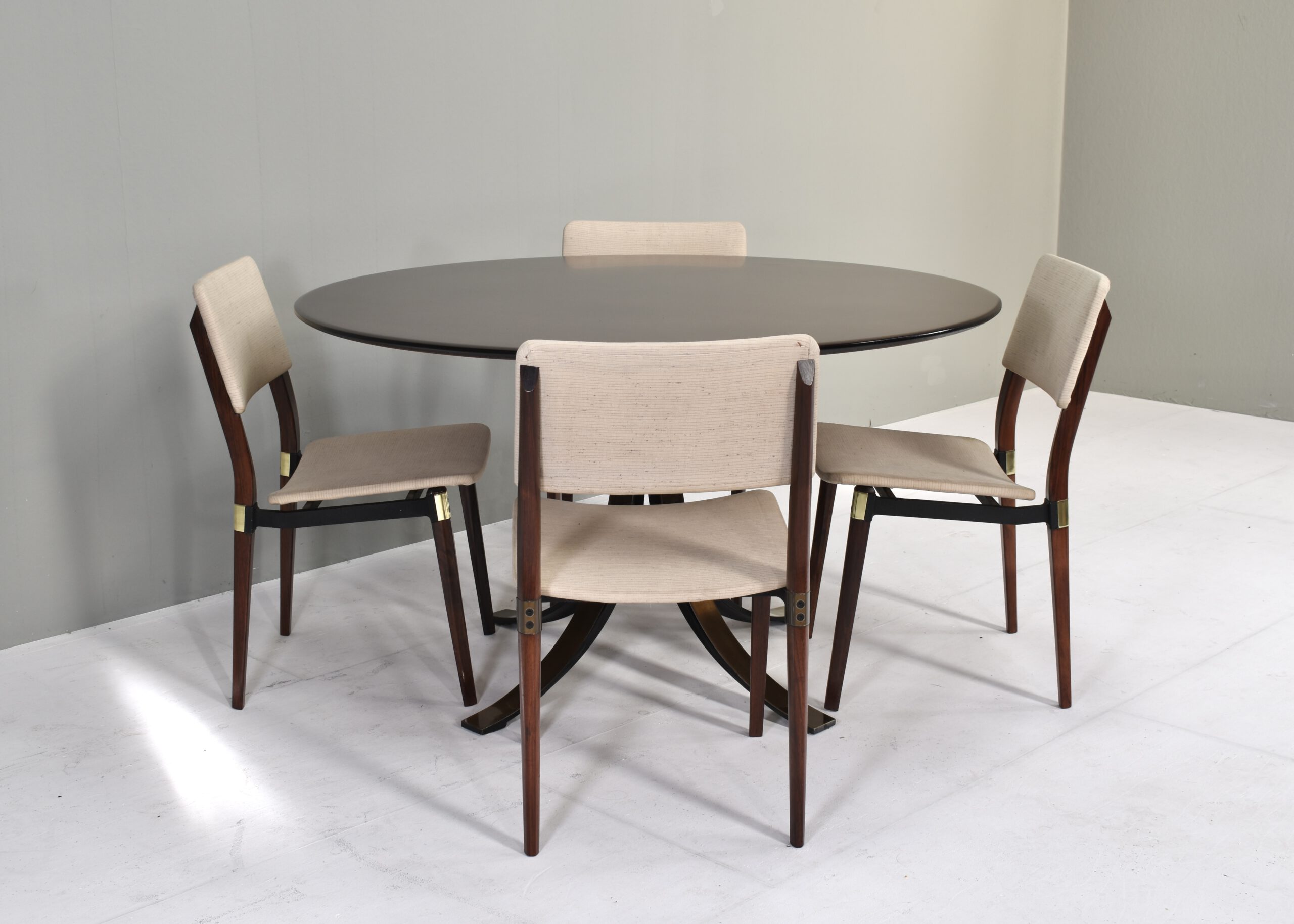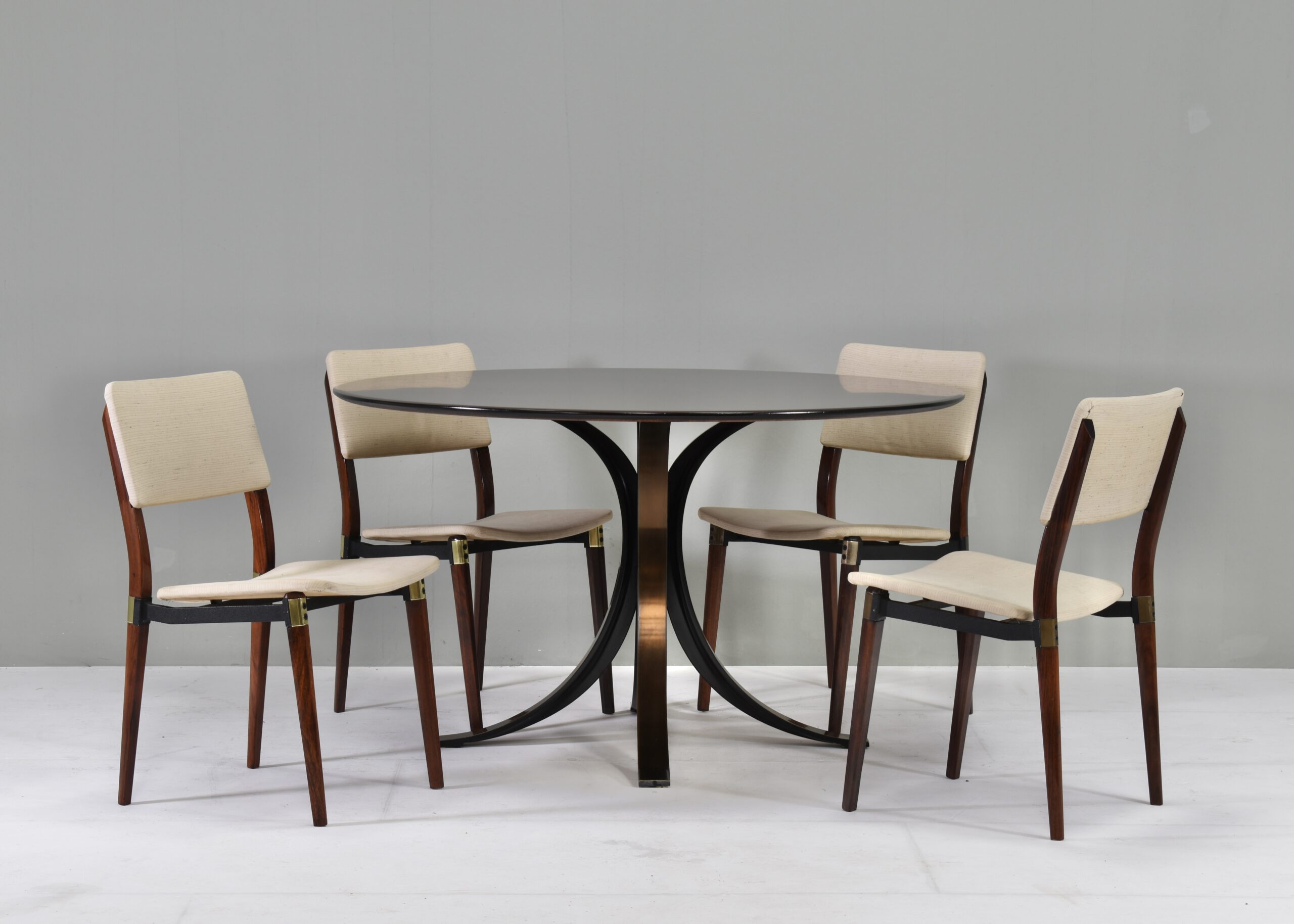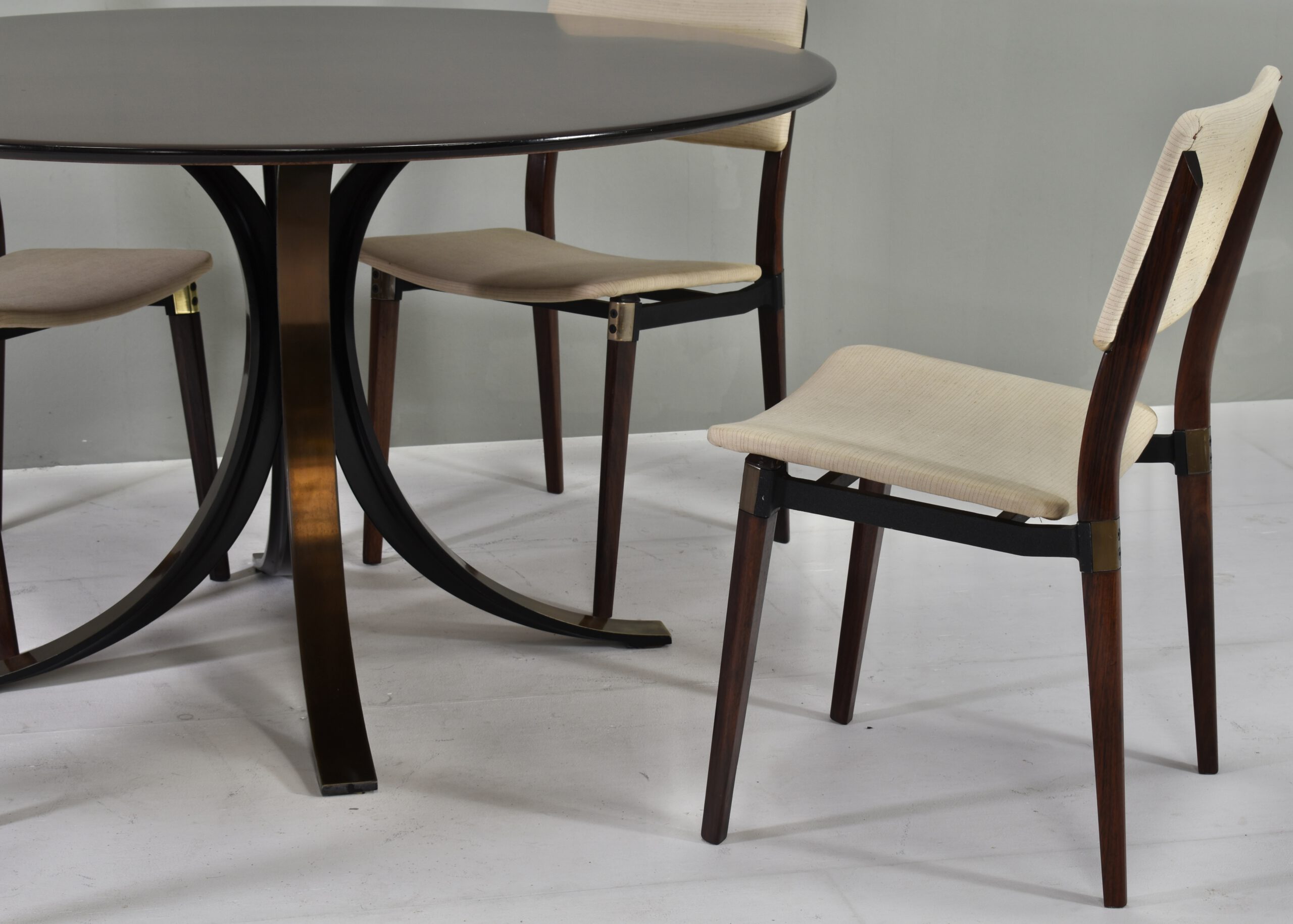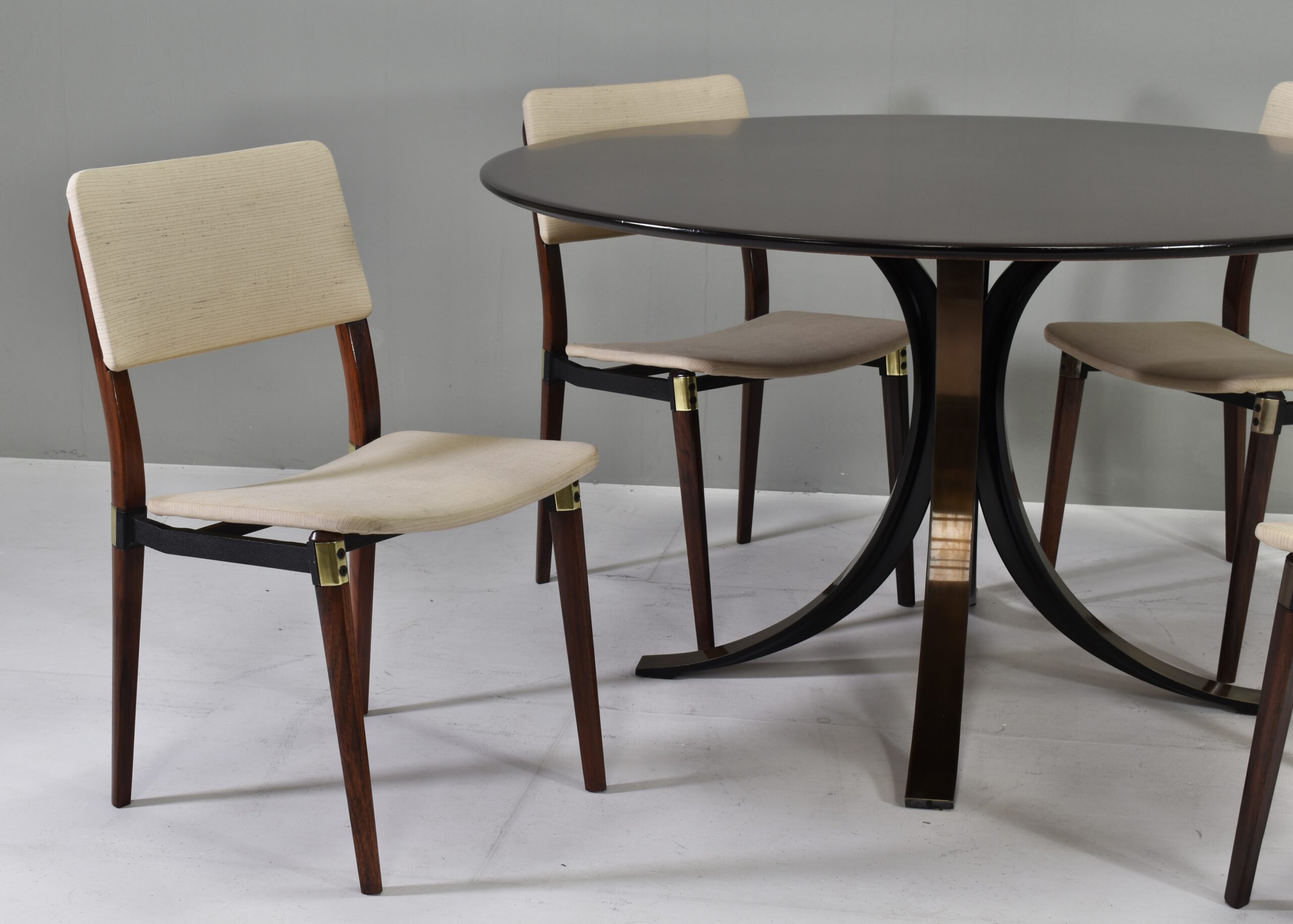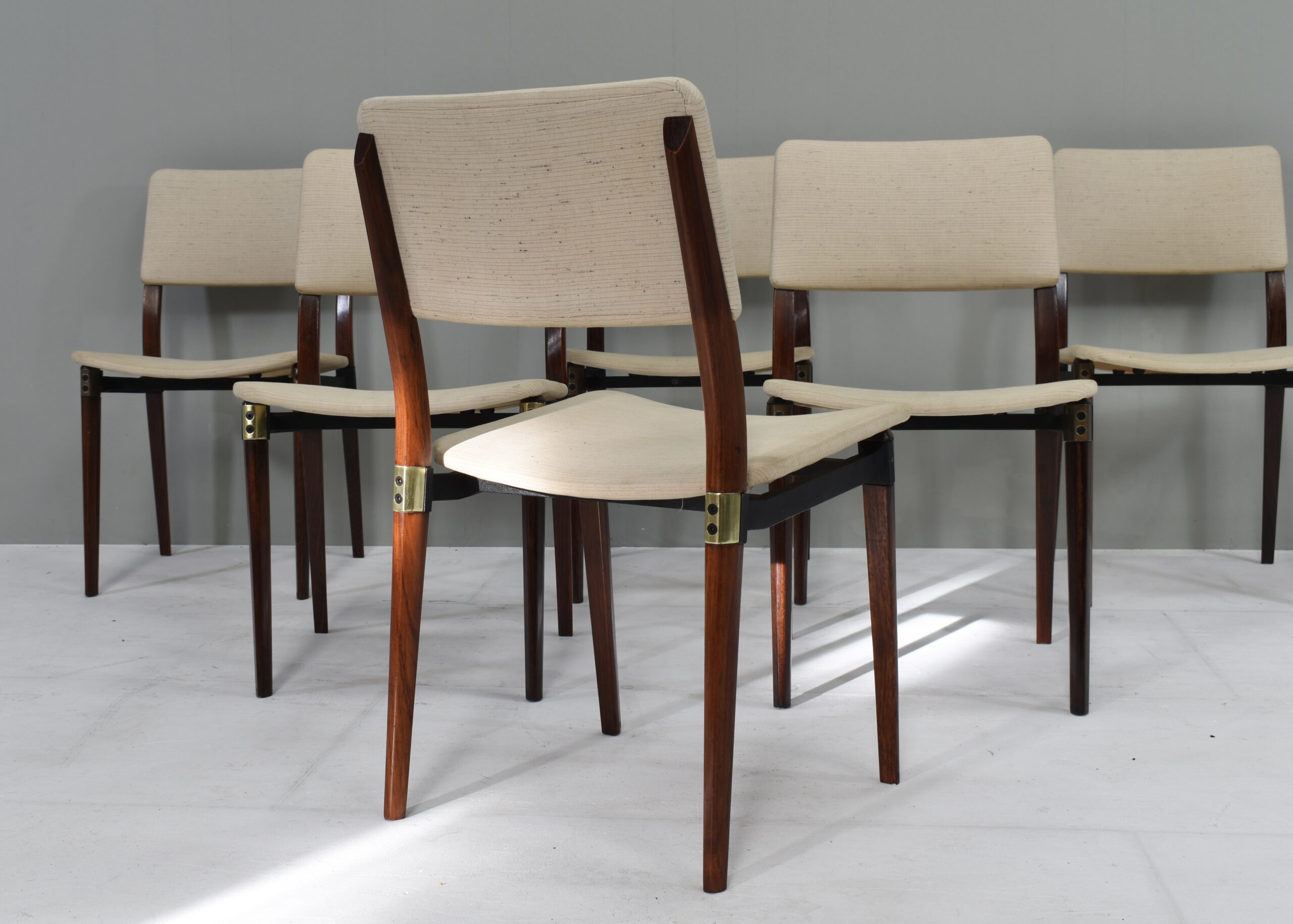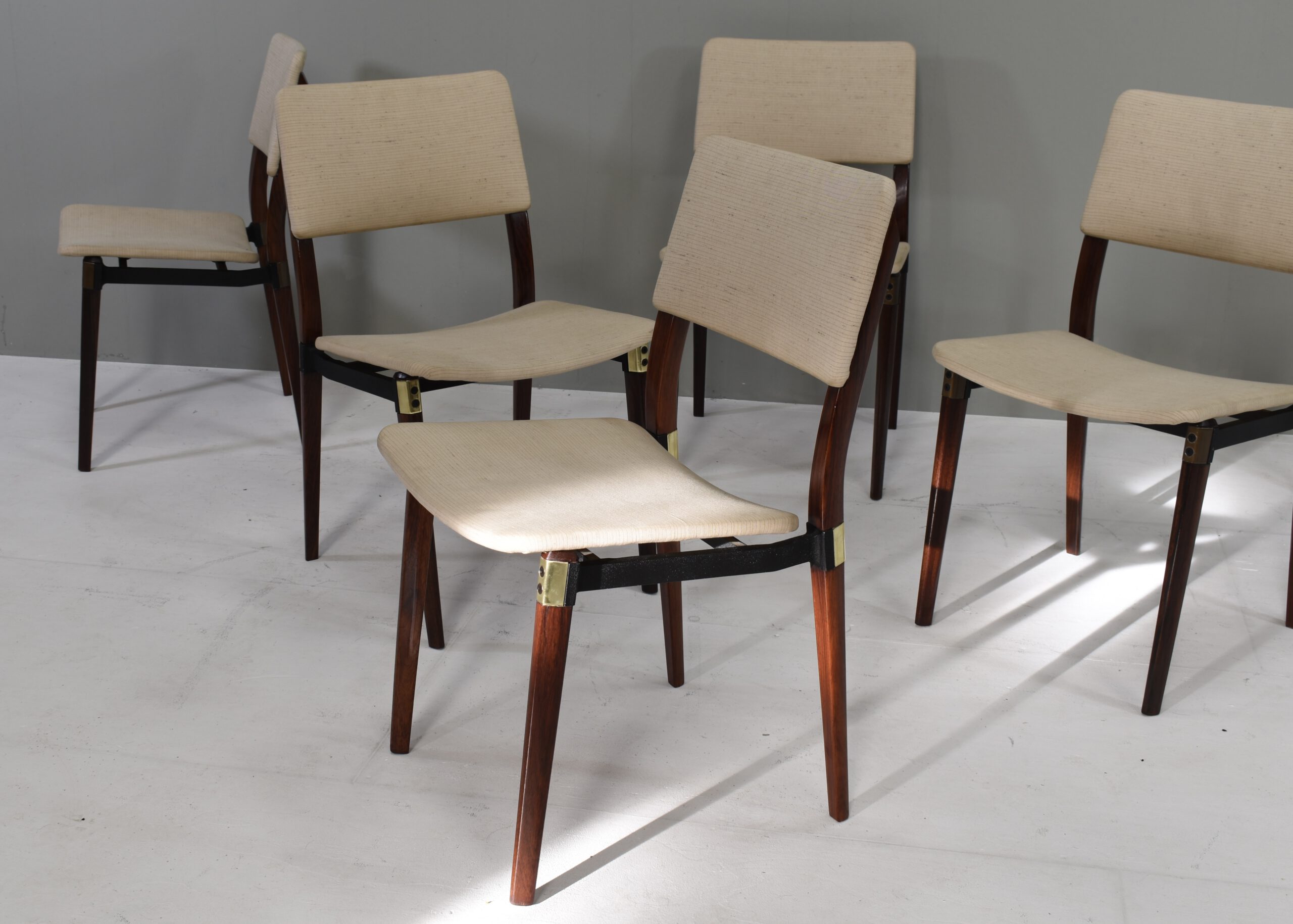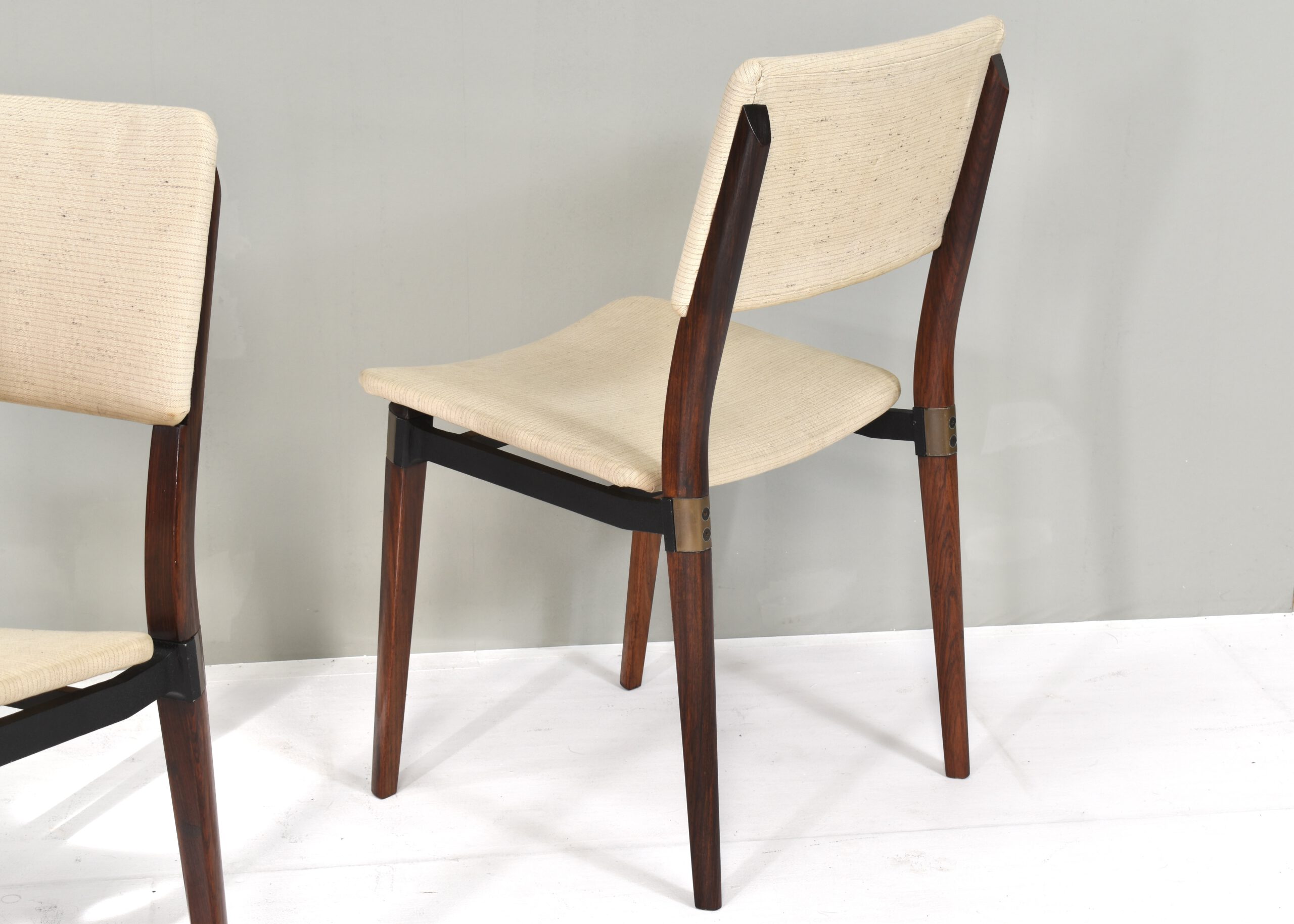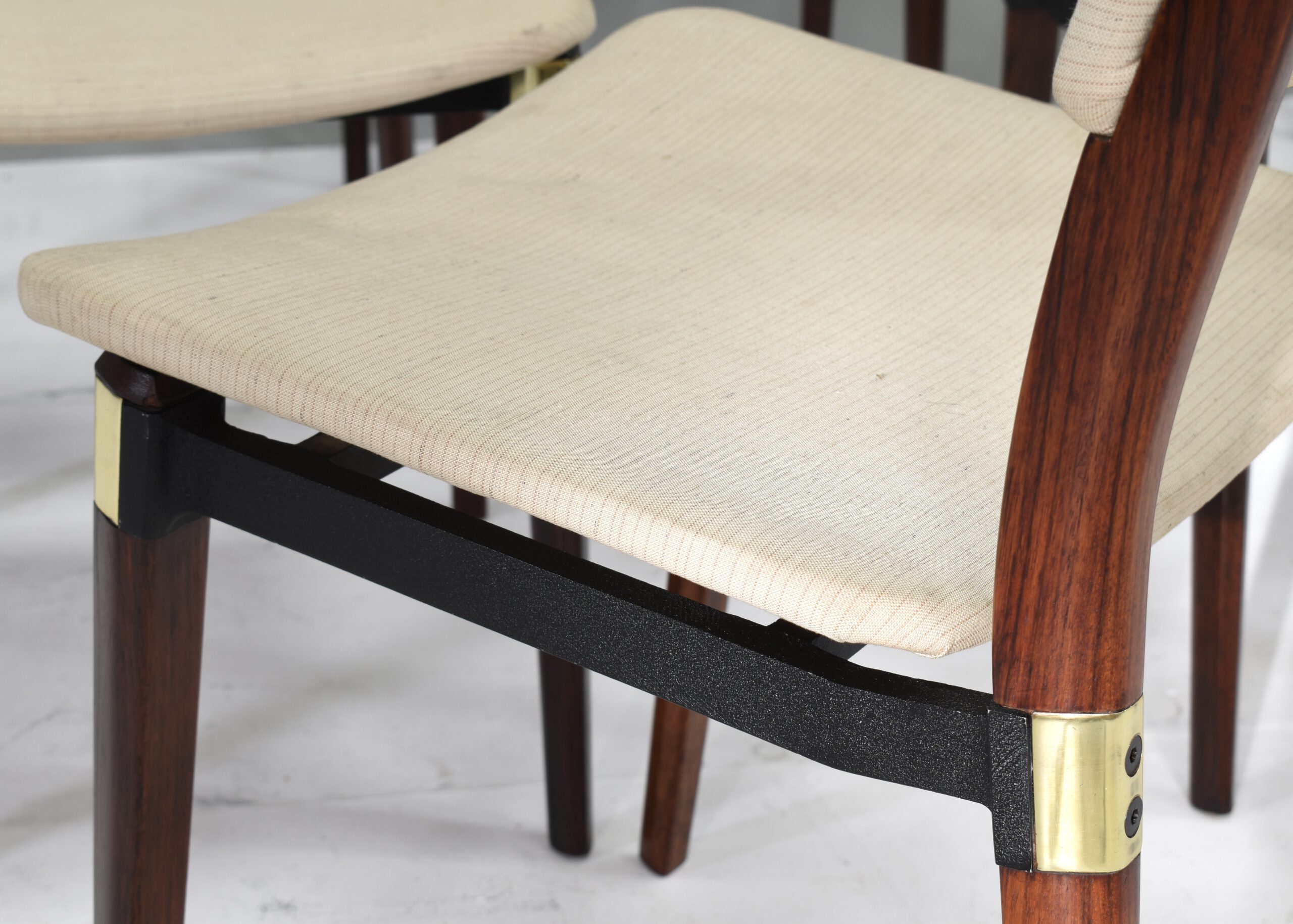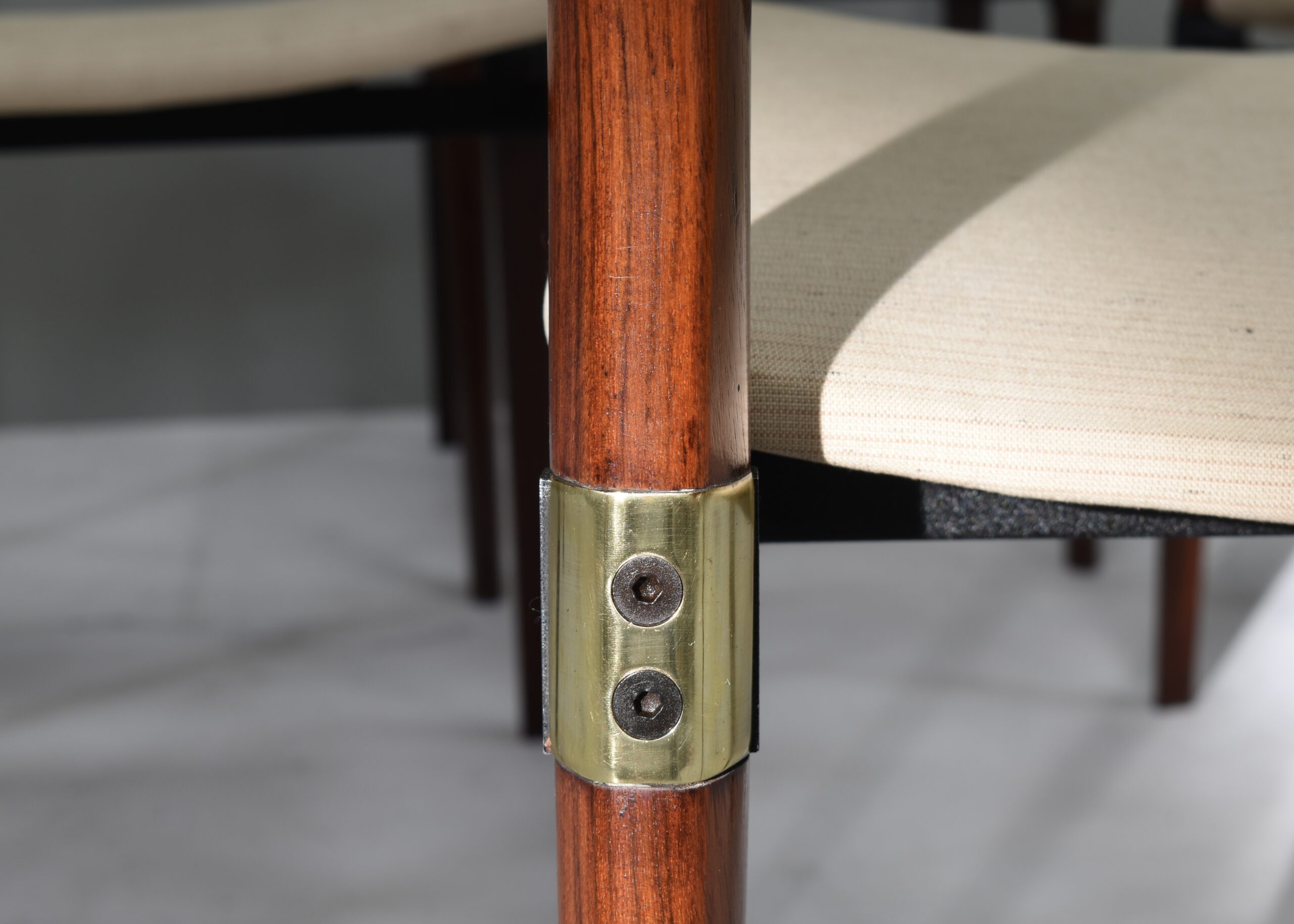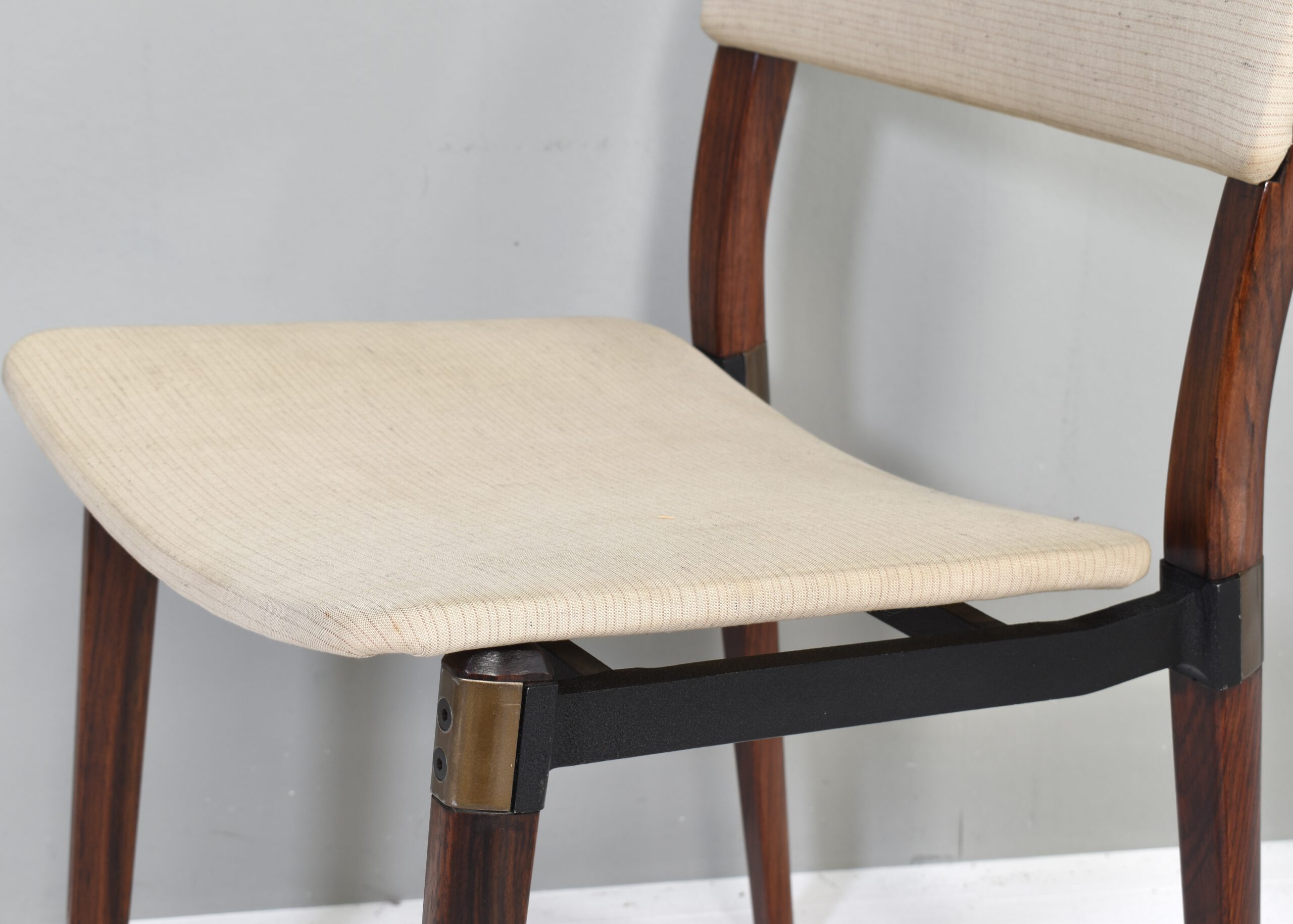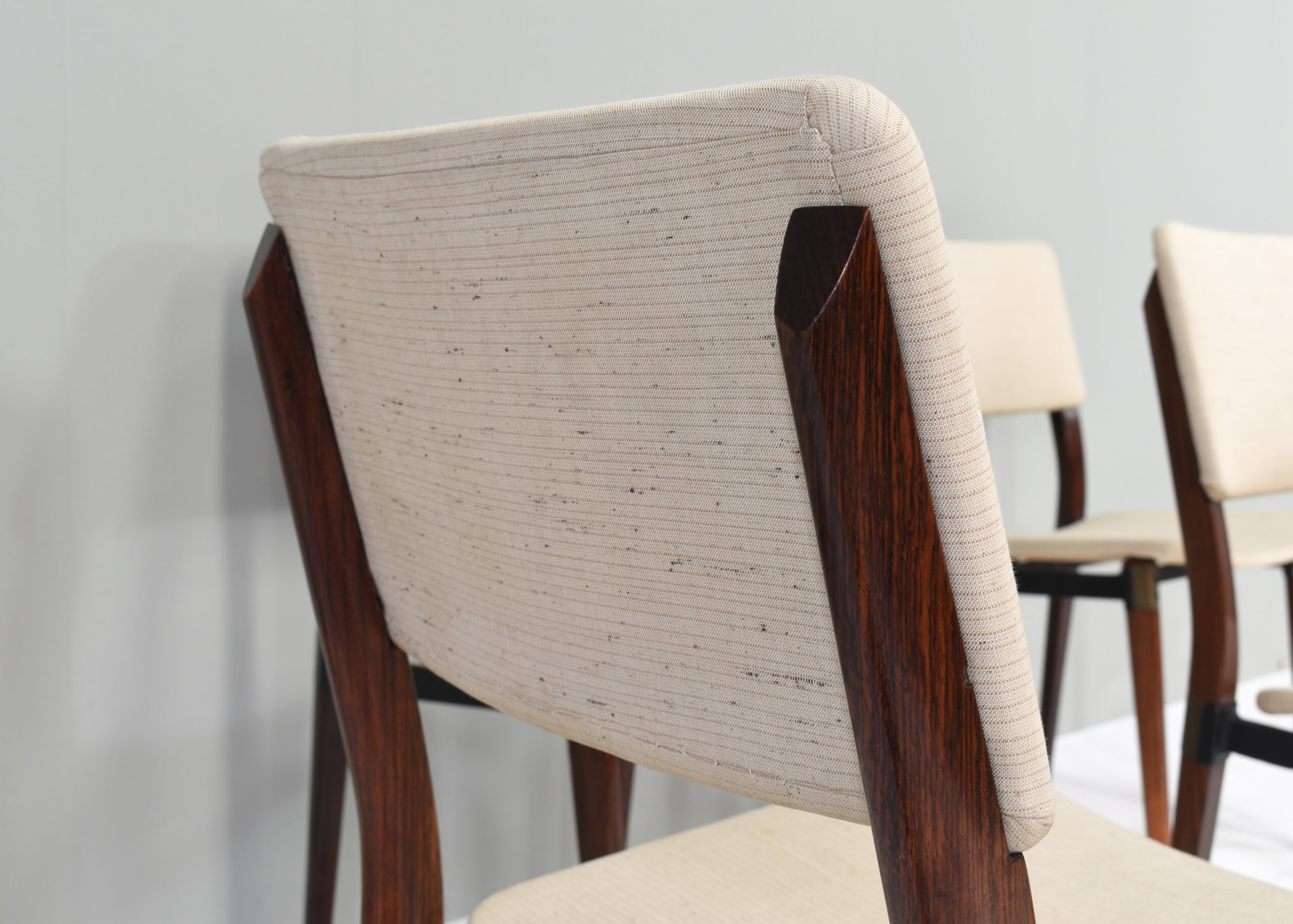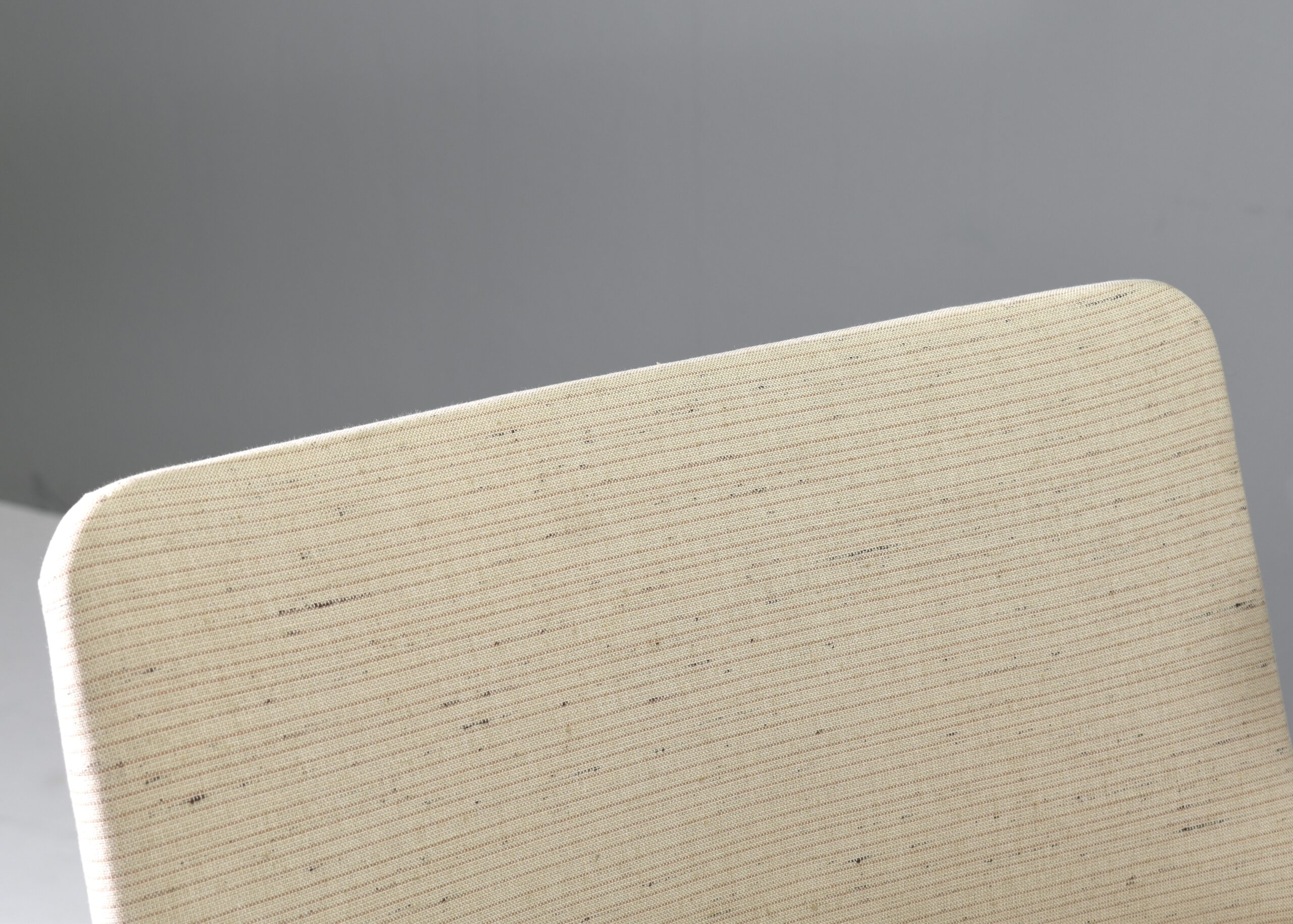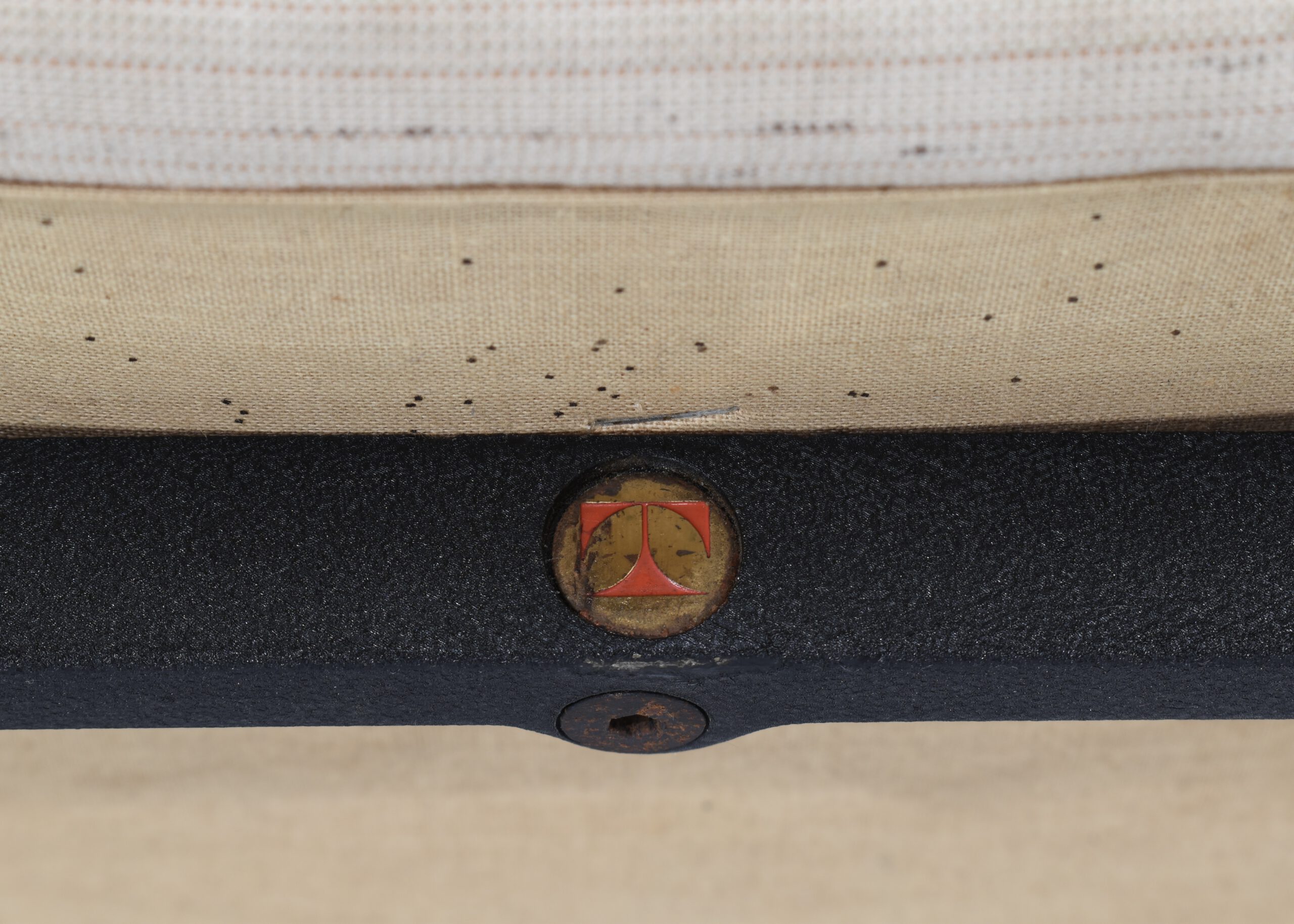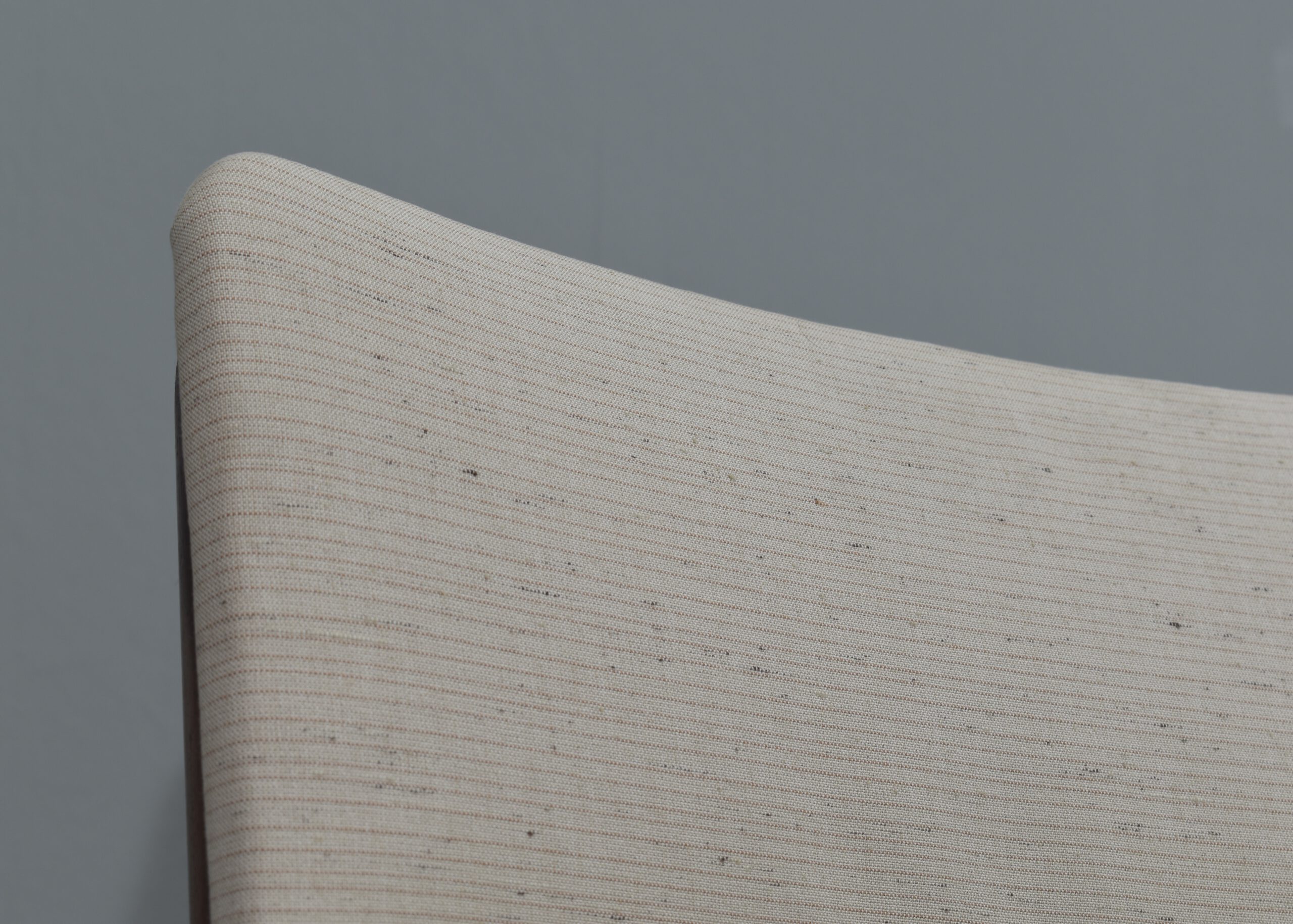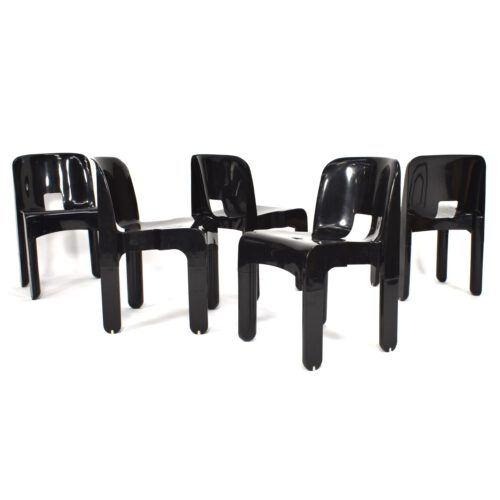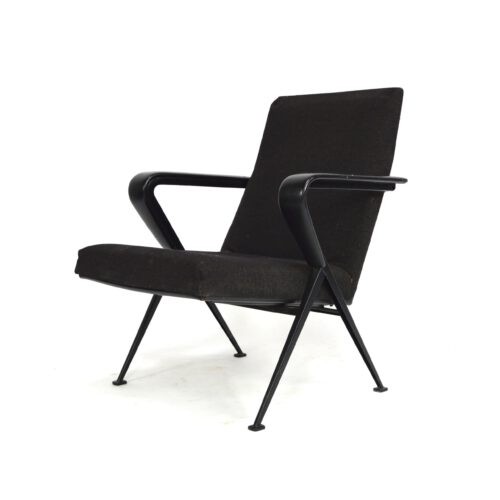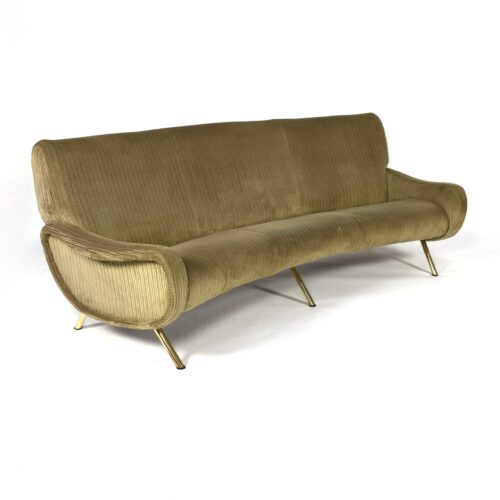Product info
Out of stock
Set of six S82 dining chairs by Eugenio Gerli (and Osvaldo Borsani) for Tecno, Italy – circa 1960. The chairs still have their original upholstery and remain in good condition with normal signs of age and use. Two chairs have brass details (rare) and four chairs have bronze colored coated metal details.
Designer: Eugenio Gerli (Osvaldo Borsani)
Manufacturer: Tecno (chairs are labeled)
Country: Italy
Model: S82 dining chairs
Design period: circa 1960
Date of manufacturing: 1960’s
Size in cm: 43x47x80 seat height 43 cm.
Material: Italian walnut / Brass / Metal / Cast iron / Original linen/cotton upholstery
Condition: Good / Normal signs of age and use
Price: On request
About Eugenio Gerli:
Eugenio Gerli (b. 1923) is an Italian architect and industrial designer known for his long-lasting collaboration with the Italian architect-designer Osvaldo Borsani and the Italian manufacturer Tecno.
In 1949, Gerli graduated with a degree in engineering and began his career a year later, opening his own architectural and industrial design practice. Gerli began experimenting with various materials such as resin, felt, and molded plywood, which led to designs he presented in 1951 at the 9th Triennale di Milano; his bent plywood armchair for Forma (1950s); and the three-legged Sommaruga Chair(1950s), which was made from resin reinforced molded felt on a steel base. Architecturally, the firm focused on residential and public buildings, as well as the renovation of historic Italian buildings. Notable architectural projects include the Cardiology Clinic in Laveno-Monbello (1950), the Ambasciatori Theater in Milan (1954), the renovation and restoration of the Castiglioni Palace (1903). Gerli was later joined by his two sons, Enrico and Guido, in the 1970s.
In 1957 Gerli began a long and fruitful collaboration with the Borsani brothers, Fulgenzio and Osvaldo Borsani (1911-1985)—founders of the Italian furniture manufacturing company Tecno. In 1968, Gerli and Osvaldo Borsani exhibited their revolutionary Graphis Office System (1967) at the 14th Triennale di Milano. The system, which was made up of just three basic elements, was heralded as a revolution in office furniture design because the system’s modular components allowed unlimited and customizable combinations, which could grow (or contract) with the company. The system remained a bestseller for decades and Tecno became synonymous for technologically-advanced design. The partnership between Gerli and Tecno lasted for more than 35 years, and resulted in many 20th-century design classics such as the T92 Butterfly Table (1960 with Mario Cristiani); T69 Table (1963 with Borsani), which features a cast dovetailing central base; the stackable S83 Chair (1966), and the PS142 and S142 armchairs (both 1966), among others.
During the 1970s, Tecno launched its Centro Progetti Tecno (CPT), an in-house team dedicated to communications and industrial design work. The team, which included Gerli, Valeria Borsani, Kugo Toru, Borsani and his son Marco, became a driving force of technologically advanced ideas in design. Although Borsani remained in charge, the purpose of the department was to present future designs as group creations. The CPT was responsible for a number of the company’s successes, including the molded plastic Modus Office Chair (1972), which won the SMAU Prize in 1973; the steel mesh Waiting System (1983), a modular seating and table concept for large public spaces; and the rebranding of Alitalia worldwide (1982-84), for which Centro Progetti Tecno was awarded the Compasso d’Oro in 1984.
Although Gerli’s career as an architect-designer was prolific, his work is often overshadowed by his contemporaries and the legacy of his long-term partner, Osvaldo Borsani.
About Osvaldo Borsani:
Osvaldo founded Tecno together with his brother Fulgenzio.
Osvaldo Borsani (Varedo 1911- Milano 1985) began work at an early age in the family business of making furniture.
In 1933 he participated in the fifth Triennale of Milan with the design for the “ Minimal House”, which was awarded the silver medal. In the post-war period, after graduation from Polytechnic, he formed friendships with numerous artists like Lucio Fontana, Agenore Fabbri, Aligi Sassu, Roberto Crippa, Fausto Melotti, and Arnaldo Pomodoro, together with whom he realized important works of art in furnishing and interior architecture.
In 1953, along with his brother Fulgenzio, he founded Tecno, the great project for which he worked his whole life in order to develop standard production with reference to that of design.
His first industrial designs were the P40 adjustable armchair (1953) and the D70 reversible seat sofa. In 1968 it was the office system Graphis (together with Eugenio Gerli and coming into vogue around the world in a million copies) thanks to which Tecno became a world-leading manufacturer in design for the office.
At the end of the Sixties, Osvaldo Borsani, together with Marco Fantoni and Valeria Borsani, created the Tecno Designs Centre, which creates new products and secures for the company the supervision of large interior architectural works, the experimentation in new technologies, and the strategies and the tools of business communication. At the same time Borsani opened up the design to collective uses and to the contribution of external designers.

